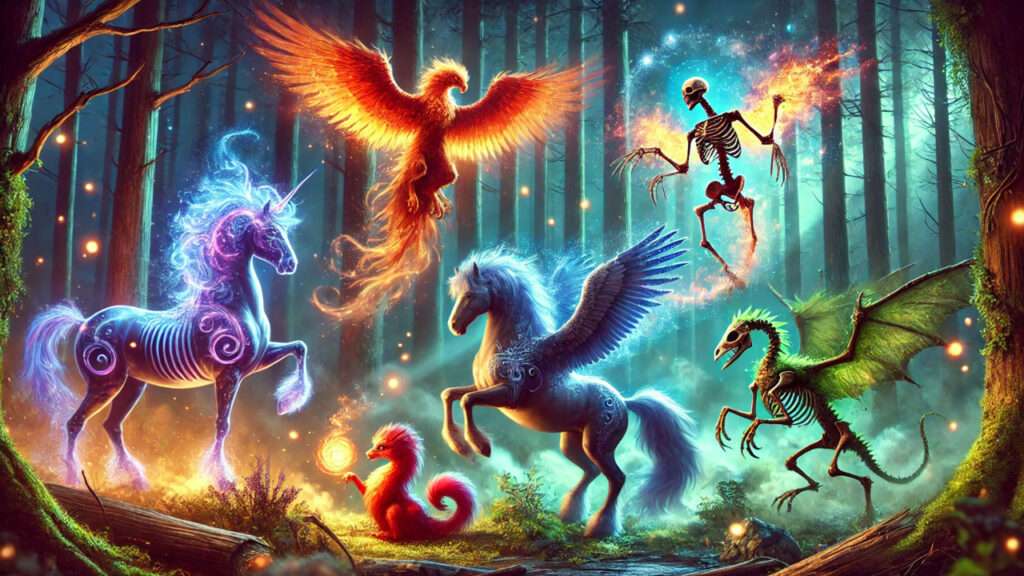
Unveiling the Creation of Magical Creatures in Harry Potter: A Deep Dive into the Lore and Mythology Behind J.K. Rowling’s Magical Beasts
Have you ever wondered where J.K. Rowling’s magical creatures came from? 🦄 From the majestic Hippogriff to the mysterious Thestral, the creation of magical creatures in Harry Potter is not just about fantastical beasts, but a deep exploration of mythology, history, and creativity. These creatures aren’t just part of the magical world—they’re symbolic, narrative-driving characters that add layers of meaning and excitement to the series.
In this article, we’ll take a closer look at how these creatures were crafted, from their mythological roots to their impact on the Wizarding World. Whether you’re a die-hard Potterhead or a curious newcomer, you’ll discover the fascinating process behind the creation of magical creatures and how they bring J.K. Rowling’s magical universe to life. Let’s dive in! ✨
Table of Contents
ToggleI. The Magic Behind Magical Creatures in Harry Potter
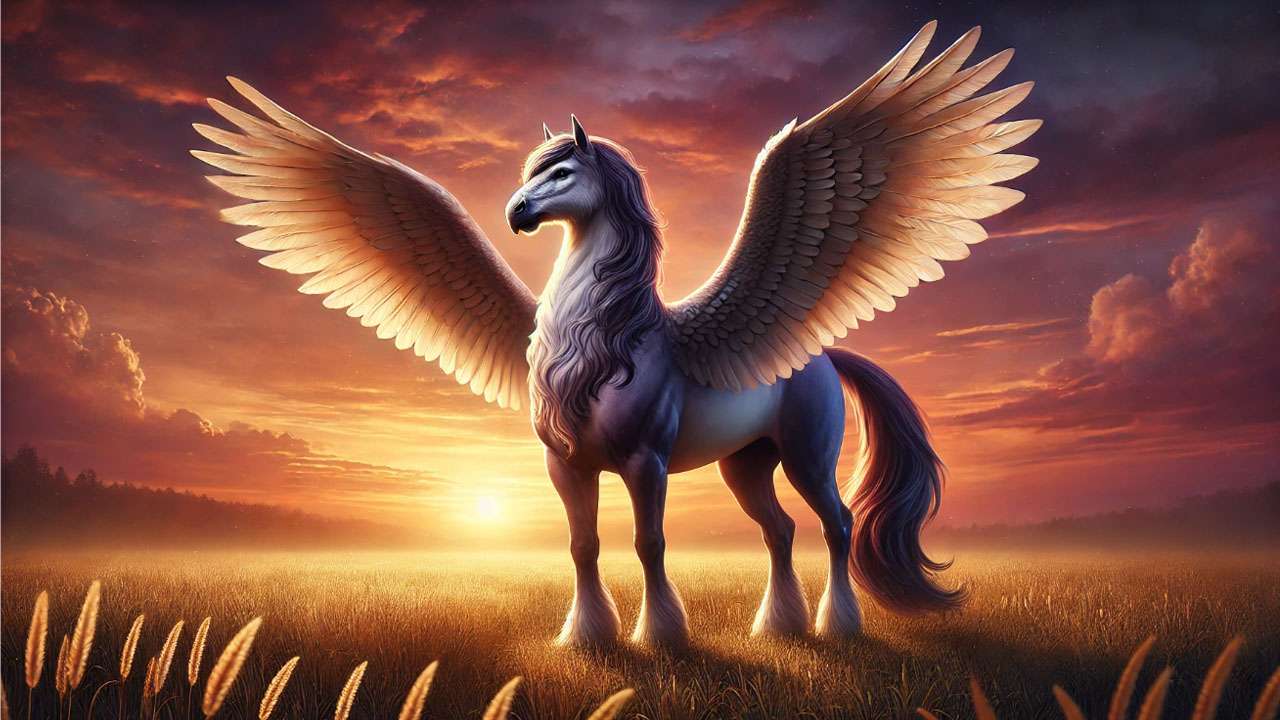
Magical creatures in Harry Potter are more than just fantastical beasts—they’re essential to the rich world-building that makes J.K. Rowling’s universe so captivating. Whether they’re fierce dragons or quirky Nifflers, each creature brings something unique to the story, symbolizing deeper themes, enhancing the plot, and enriching the magical world. But have you ever wondered how these creatures were created? 🤔
The creation of magical creatures in Harry Potter is a blend of mythology, creativity, and a deep understanding of how creatures shape storytelling. Rowling didn’t just invent magical beings for the sake of fantasy; she designed them to reflect important aspects of the Wizarding World and real-world human emotions and values. Let’s explore how these creatures were carefully crafted and how they became so much more than just mythical animals. ✨
1. Drawing Inspiration from Mythology and Folklore 🏺
Many magical creatures in Harry Potter are inspired by creatures found in global myths and folklore. For example, the Hippogriff, a majestic mix of a horse and an eagle, has roots in Greek mythology. Similarly, the Basilisk, a deadly serpent with the power to turn people to stone, originates from ancient European legends.
J.K. Rowling took these traditional creatures and reimagined them for the Wizarding World, adding unique magical abilities and characteristics that made them truly one-of-a-kind. This approach not only made the creatures feel grounded in reality but also enriched the storytelling by connecting them to timeless themes of fear, power, and wonder.
2. Creatures with Symbolic Significance ⚡
The magical creatures in Harry Potter aren’t just for show—they hold symbolic significance that ties into the characters’ journeys and the overall themes of the series. Take, for example, the Thestrals. These dark, winged creatures are only visible to those who have witnessed death, symbolizing grief and the inevitability of mortality. Yet, despite their spooky appearance, Thestrals are gentle, misunderstood beings, reminding readers that things aren’t always as they seem.
Similarly, the Hippogriff represents honor and loyalty. Buckbeak, who plays a significant role in The Prisoner of Azkaban, teaches Harry and his classmates about the importance of respect, especially when interacting with creatures of such power. Through these creatures, Rowling not only adds magic but layers of meaning that enrich the emotional depth of the series.
3. Crafting Creatures to Drive the Plot 🔮
Magical creatures in Harry Potter also serve as pivotal plot devices. Without the Dragon in the Triwizard Tournament or the Buckbeak incident at Hogwarts, key moments in the story wouldn’t have the same dramatic impact. These creatures often challenge the characters, forcing them to face fears or test their courage, which ultimately drives their personal growth.
For instance, Hagrid’s love for magical creatures, despite their sometimes dangerous nature, shows his belief in the good in all beings, even the misunderstood ones. This belief contrasts with the darker attitudes of characters like Draco Malfoy, who dismisses creatures like Buckbeak as inferior. Through these interactions with magical creatures, the story builds on themes of empathy, judgment, and courage.
4. Fusing Fantasy and Realism 🦋
Rowling’s approach to designing magical creatures is also a perfect blend of fantasy and realism. While creatures like Dragons and Thestrals are undeniably magical, their behavior, instincts, and relationships with wizards often mirror those of real animals. For example, the way Hippogriffs require respect and care mirrors how certain animals demand a respectful approach to training or interaction. These realistic traits make the magical creatures feel more authentic and relatable to readers, who can connect to their care and handling.
By combining magical traits with natural animal behaviors, Rowling created a world that feels both fantastical and grounded, allowing readers to fully immerse themselves in the story.
II. The Origins of Magical Creatures in the Harry Potter Universe
Magical creatures in the Harry Potter series don’t simply exist for the sake of fantasy—they are deeply rooted in history, mythology, and folklore. J.K. Rowling’s genius lies in how she draws from these ancient sources to create a world that feels both magical and authentic. Understanding the origins of these creatures gives us a richer appreciation of their role in the Wizarding World. Let’s explore where these creatures came from and how their origins influenced their creation. 🧙♀️✨
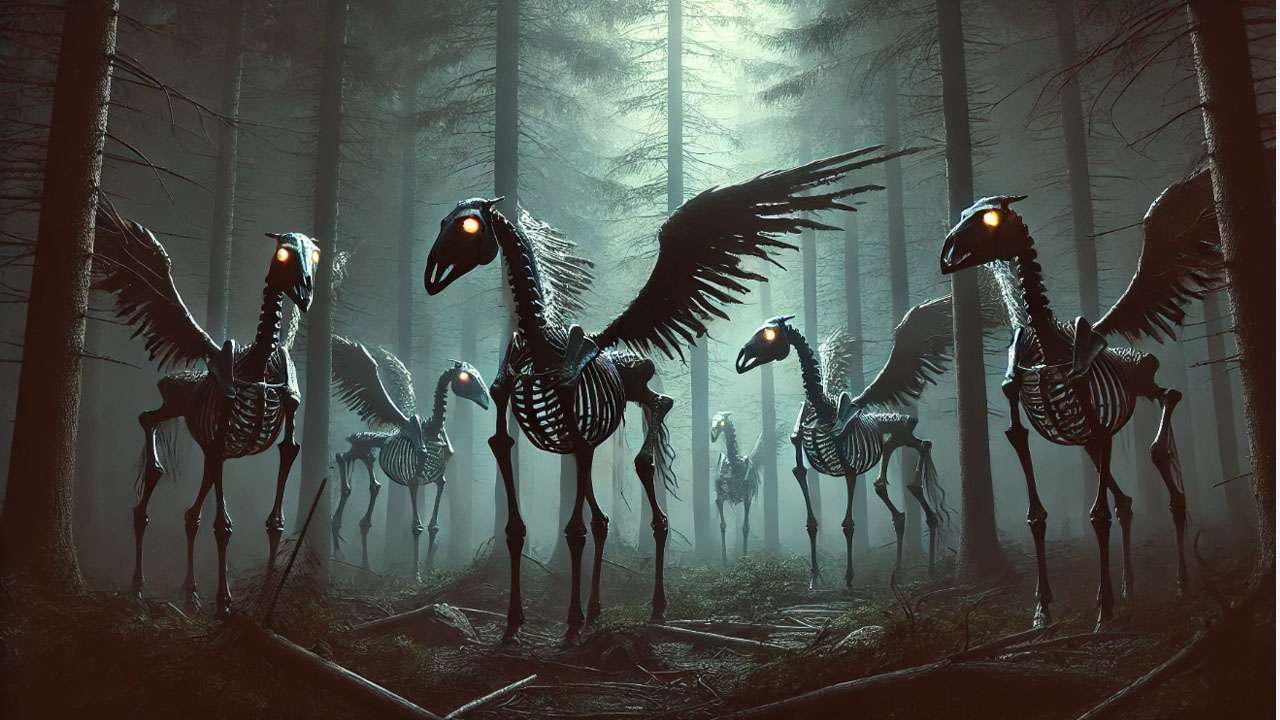
1. Mythological Inspirations and Ancient Legends 📜
Many of the magical creatures we encounter in Harry Potter are inspired by creatures found in mythologies across the world. For instance, the Basilisk, a giant serpent with deadly powers, comes from European folklore, where it was believed to be a creature that could kill with a single glance. Rowling took this deadly mythology and incorporated it into her magical world, making the Basilisk not only terrifying but a key element in Harry Potter and the Chamber of Secrets.
Similarly, Dragons have appeared in mythologies worldwide, from Chinese dragons symbolizing wisdom and power to the fire-breathing beasts in European legends. In Harry Potter, dragons are majestic but dangerous creatures, tied to the idea of primal strength and elemental power. Rowling took these legendary creatures and added a magical twist, turning them into a vital part of the magical world’s ecosystem. 🌍🐉
2. Blending Real Creatures with Fantasy 🦄
While many of the magical creatures in the Harry Potter universe come from ancient myths, Rowling also drew inspiration from real animals, enhancing their characteristics with magical abilities. For example, the Hippogriff is a creature with the body of a horse and the wings and head of an eagle, blending two real animals into something fantastical. This combination of traits is not just imaginative but serves a narrative purpose, highlighting themes of honor and respect (as seen with Buckbeak’s interactions with Harry).
Rowling’s approach to blending real-world animals with magical traits allowed her to create creatures that felt both familiar and extraordinary. This connection to reality made magical creatures like the Niffler, a mischievous, treasure-hunting creature, more relatable while still being delightfully magical. ✨🐾
3. The Role of Historical and Cultural Symbolism 🌏
Another key element in the creation of magical creatures is the use of cultural symbolism. For instance, the Thestral—the skeletal, winged horses visible only to those who have witnessed death—symbolizes themes of loss, grief, and the cycle of life. Thestrals serve as a powerful reminder of the Wizarding World’s nuanced take on death, a theme that runs through much of the series.
Similarly, creatures like Merpeople, which appear in Harry Potter and the Goblet of Fire, have their roots in mythological water beings found in cultures worldwide. Their role in the Triwizard Tournament echoes ancient myths of underwater trials and quests, tying the magical to the historical. 🏰🌊
4. Drawing from J.K. Rowling’s Personal Influences 📝
Beyond folklore and mythology, J.K. Rowling’s personal experiences and interests have also played a significant role in shaping the magical creatures in her world. Many of the creatures reflect her fascination with animals, nature, and the environment. For example, Acromantulas (giant spiders) are directly inspired by Rowling’s fear of spiders, making them terrifyingly real to readers who share this phobia.
This personal connection to the creatures in the books allows Rowling to bring a sense of authenticity to their behaviors and characteristics, making them feel more alive and meaningful. It’s not just about creating scary creatures—it’s about creating beings that evoke real emotions, fears, and connections in readers. 😱🕷️
III. The Creative Process: How J.K. Rowling Created Magical Beasts
Creating magical creatures is no easy feat, but J.K. Rowling’s genius lies in how she combines imagination with carefully chosen inspirations from folklore, nature, and her personal experiences. In this section, we’ll explore the creative process behind some of the most iconic magical creatures in Harry Potter and reveal how Rowling brought these fantastic beings to life. 🧙♀️✨
1. Inspiration from Nature and Mythology 🌍📜
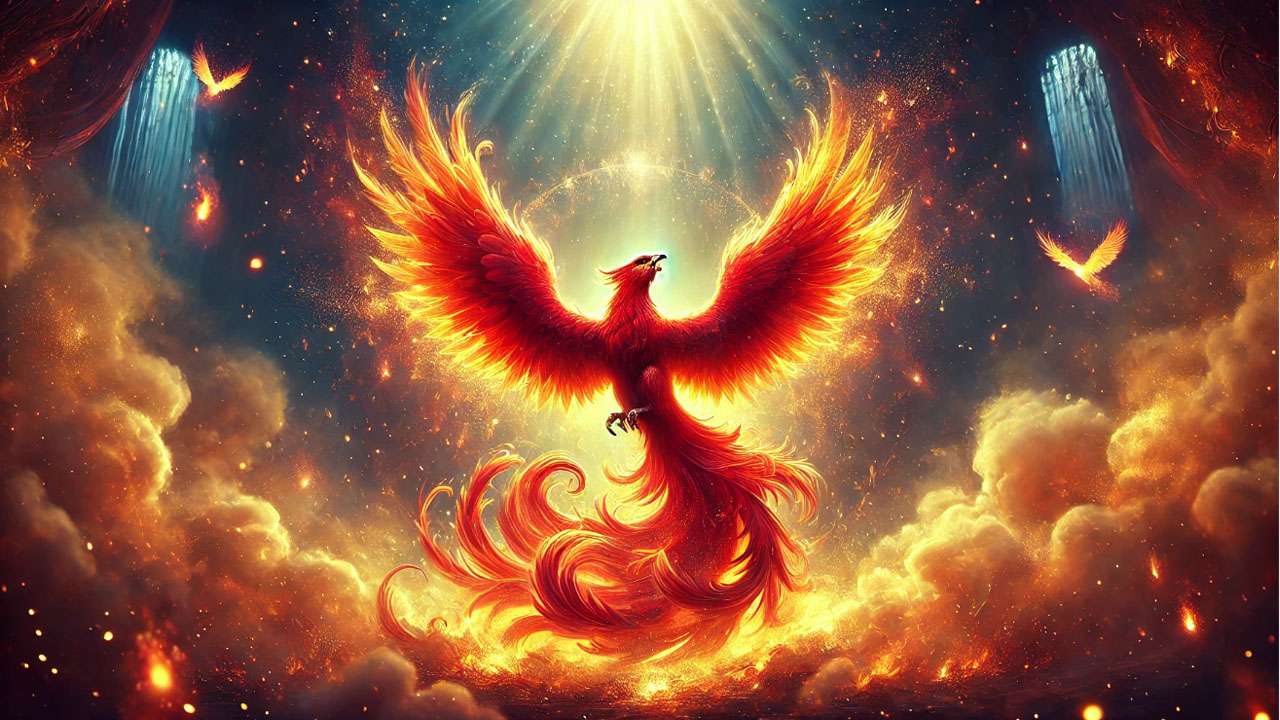
Rowling didn’t just pull magical creatures out of thin air. Instead, she looked to real-world animals, myths, and legends to inspire their designs. Take, for example, the Hippogriff—a blend of a horse and an eagle. This creature draws directly from classical mythology, where such hybrids symbolized nobility and power. Rowling took this mythological foundation and expanded it, giving the Hippogriff a deeply important role in The Prisoner of Azkaban, where it teaches valuable lessons about respect and trust.
Similarly, Dragons in the Wizarding World combine elements of the traditional, powerful beasts of folklore with magical traits that make them uniquely dangerous and majestic in Rowling’s universe. These real-world and mythical influences provide a foundation for her creatures, making them feel grounded while still being magical.
2. Blending Functionality with Fantasy ✨🐉
Rowling didn’t stop at simply drawing from mythology; she also ensured that her magical creatures served a purpose in the world she was creating. Each magical beast was crafted with specific functions in the storyline and symbolic meanings in mind.
For example, Thestrals—creatures that are only visible to those who have witnessed death—serve as a symbol for understanding mortality. They aren’t just visually eerie; they also help convey deeper themes of loss and acceptance, as seen in The Order of the Phoenix. Meanwhile, Nifflers, known for their obsession with shiny objects, bring humor and lightheartedness to the story, offering a fun contrast to the darker, more serious creatures.
Each magical creature’s unique traits are carefully selected to add emotional depth and drive the plot forward, showing how Rowling designed creatures with both function and fantasy in mind.
3. The Role of Naming and Descriptions 📚🦄
When creating magical creatures, names and descriptions are vital. Rowling is known for her clever naming conventions, often using names that hint at a creature’s nature or traits. Buckbeak, the Hippogriff, gets its name from its bird-like beak and the “buck” (horse) aspect of its body. Similarly, the Acromantula, a giant spider, gets its name from a blend of “acro” (meaning “high” in Greek, referencing its large size) and “mantis” (the genus of praying mantises).
These names are not only functional but help immerse readers in the world of magic. The descriptions themselves, from the eerie look of a Basilisk to the plump, comical appearance of a Pygmy Puff, ensure that each creature has a memorable visual identity. This level of detail makes each creature feel real and adds to their immersive presence in the story.
4. Psychological and Emotional Depth 🧠💫
A major part of Rowling’s creative process was to give her creatures emotional depth and a psychological layer that resonated with readers. Creatures like the Thestral are not just visually intriguing; they also reflect the psychological effects of trauma and loss. By making Thestrals invisible to those who haven’t experienced death, Rowling forces readers to confront the uncomfortable reality of mortality.
This psychological dimension extends to characters like Hagrid, who nurtures and cares for these magical creatures, often showing empathy toward them when others don’t. This connection between characters and creatures adds another layer to the narrative, turning magical beasts into more than just plot devices—they become mirrors for the emotional journeys of the characters.
5. Consistency and the Rule of Magic ⚡📏
To make her magical creatures believable within the Wizarding World, Rowling adhered to certain rules of magic. She created creatures that were not only magical but also followed the same logic as other elements in her universe. For example, the Fawkes, Dumbledore’s loyal phoenix, regenerates by bursting into flames when it dies and is reborn from its ashes. This follows a natural cycle of life, death, and rebirth—a central theme in many magical worlds, but with a uniquely Rowling twist.
IV. The Role of Magical Creatures in Wizarding World Culture
Magical creatures in the Harry Potter universe play a crucial role in shaping not just the story but also the culture of the Wizarding World. From ancient traditions to modern magical practices, these creatures help define what it means to be part of the magical community. Let’s dive into how these creatures influence wizarding society and why they are so deeply embedded in the culture of magic. 🧙♂️✨
1. Magical Creatures as Symbols of Cultural Values 🦄🏰
In the Wizarding World, magical creatures are more than just mystical beings; they serve as symbols of the values and principles that wizards hold dear. For instance, the Hippogriff represents respect and honor. Buckbeak’s interactions with Harry Potter in The Prisoner of Azkaban are a perfect example of this—only those who show proper respect to the Hippogriff can approach it without fear of harm.
This idea of respect extends across many creatures. The Centaur, for example, is symbolic of independence and pride, and the Phoenix is a symbol of rebirth and immortality, echoing themes of hope and resilience. By using creatures as metaphors for core values, Rowling enriches the cultural landscape of her magical world.
2. Magical Creatures and the Wizarding Economy 💰🐉
Magical creatures also play a vital role in the wizarding economy, either directly or indirectly. From Dragons to Nifflers, many magical creatures are valuable commodities. Dragons, for instance, are prized for their fire-resistant scales and other magical properties. Gringotts, the wizarding bank, even uses dragons to guard its vaults, showcasing the immense value placed on these magical creatures.
In contrast, creatures like the Niffler, which has an insatiable lust for shiny objects, are less economically valuable but are still significant in everyday magical life, as they’re used for various tasks, including treasure hunting. These interactions with magical creatures show that they aren’t just part of the wild, but also integral to the functioning of the wizarding economy. 🏦✨
3. Magical Creatures and the Study of Magizoology 🔬🐾
In the Wizarding World, Magizoology is the study of magical creatures, and it holds a respected place in magical academia. Hagrid, as the Keeper of Magical Creatures at Hogwarts, introduces students to this fascinating field, teaching them to care for and respect creatures like Flobberworms, Blast-Ended Skrewts, and Mandrakes. This subject highlights the importance of understanding magical creatures in the wizarding community, not just for academic reasons but for ensuring a harmonious relationship with them.
Magizoologists like Newt Scamander, the author of Fantastic Beasts and Where to Find Them, also contribute to preserving and studying magical creatures. This not only serves practical purposes (like ensuring magical creatures are protected) but also helps foster a deeper understanding and respect for these often misunderstood beings. 📚🐍
4. Magical Creatures and the Law: Regulation and Protection ⚖️🌍
The importance of magical creatures is also reflected in the laws governing their treatment and protection. The Ministry of Magic has strict regulations in place to ensure the safety of magical creatures, including the Regulation of Magical Creatures Act, which protects certain species from harm and exploitation. For instance, the House-Elf Liberation Front advocates for the rights of house-elves, creatures with their own cultural significance, though often mistreated.
These laws show that magical creatures are considered valuable members of the magical ecosystem, deserving of both respect and legal protection. The government’s role in regulating their use and treatment illustrates just how deeply creatures are embedded in the social fabric of the Wizarding World.
5. Magical Creatures and Their Role in Wizarding Folklore 🌙📖
Just as in our world, folklore and stories about magical creatures abound in the Wizarding World. From tales of the Merpeople who live in the Black Lake to the Griffin that guards ancient treasures, these creatures are part of wizarding legends and myths. These stories are passed down through generations, helping to shape the magical community’s understanding of the creatures and their roles in the world.
V. The Science of Magic: How Magical Creatures Are Designed
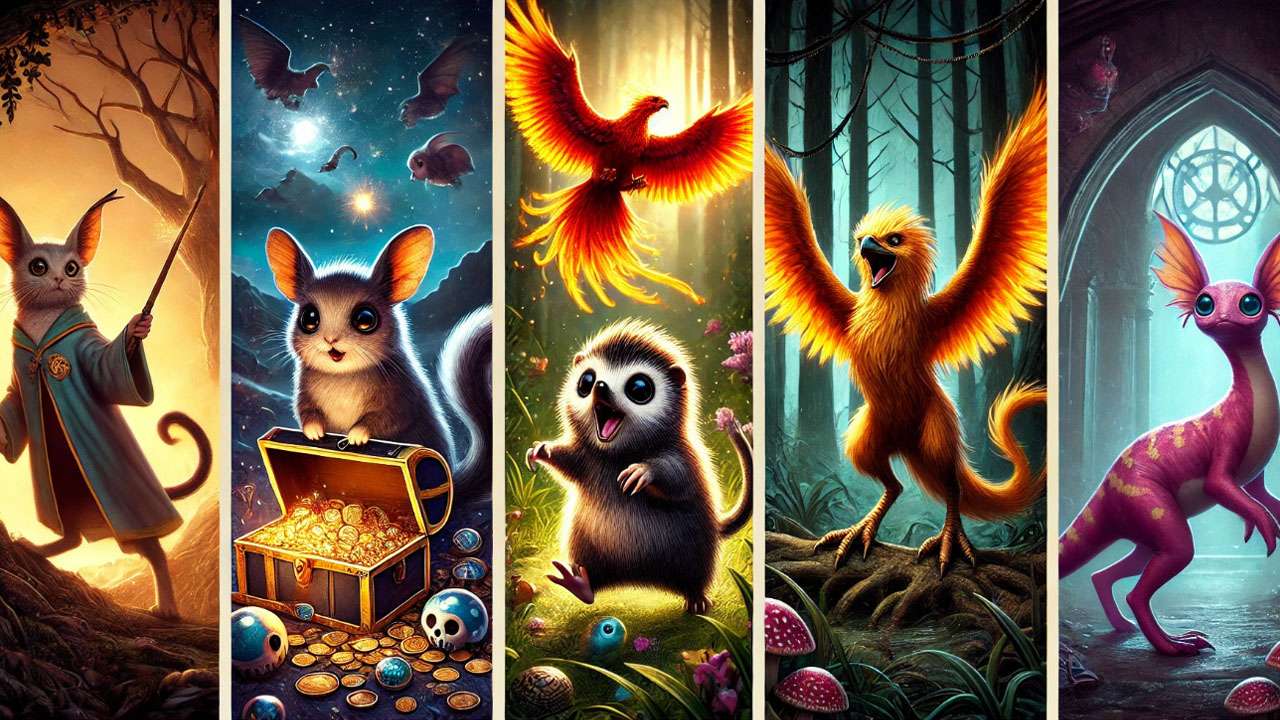
Designing magical creatures for the Harry Potter universe goes far beyond simple imagination—it involves a thoughtful blend of biological principles, magical traits, and creative world-building. J.K. Rowling, along with illustrators and filmmakers, combined elements of real-world science with the fantastical to create creatures that feel both magical and believable. Let’s break down the science behind how these creatures were designed and how real-world biology is mixed with wizarding magic. 🧬✨
1. Merging Real Biology with Magical Traits 🦄🔮
Rowling’s magical creatures often take inspiration from real animals, but with a twist. The Hippogriff, for example, combines the grace of a horse with the wings and head of an eagle. This hybrid design draws from real biology—horses are powerful, while eagles are symbols of majesty and freedom—but it’s the magical element that makes it unique. By combining these two creatures, Rowling adds an extra layer of symbolism and magic, giving the Hippogriff the ability to fly and display extraordinary intelligence.
Similarly, the Thestral—a winged, skeletal horse visible only to those who have witnessed death—uses real-world biology (horses, bones, wings) to create an eerie, magical creature that symbolizes loss and acceptance. This use of real biological concepts grounded in fantastical traits makes magical creatures feel both familiar and otherworldly. 🌍🦇
2. Designing Creatures for Functionality and Symbolism 🎭💡
Beyond biology, the design of magical creatures also serves a practical and symbolic purpose. Creatures are often designed to represent specific themes or lessons in the Wizarding World. For example, Dragons are fierce, powerful creatures symbolizing strength and danger. The Hungarian Horntail—a dragon encountered during the Triwizard Tournament—embodies the idea of overcoming fear and facing challenges head-on.
On the other hand, creatures like the Niffler are designed with a lighter, comedic function in the story. The Niffler’s obsession with shiny objects and its ability to cause chaos is more playful, highlighting the whimsical side of magical creatures in contrast to their more serious counterparts. Each creature’s design carefully aligns with its role in the story, making sure it serves both a narrative and symbolic purpose. ⚖️🐾
3. Adaptation to Magical Environments 🌲🏰
One of the most fascinating aspects of designing magical creatures is how they are adapted to their magical environments. Just as real-world animals evolve to thrive in their habitats, magical creatures have characteristics that help them survive in the magical world.
Take the Blast-Ended Skrewts—these bizarre creatures, bred by Hagrid, are designed to thrive in the wild, magical conditions of the Forbidden Forest. They have fire-breathing capabilities and a tough exterior to protect themselves from magical predators. This adaptive trait mirrors how real-world creatures develop unique characteristics to survive in their environments.
Similarly, the Mandrake, with its powerful, ear-piercing scream, is perfectly suited for its purpose—helping cure petrified victims. Its design is an example of a creature whose traits are directly tied to its magical function in the wizarding world. 🌿🍂
4. Creating Magical Biology and Powers ⚡🔬
Magical creatures in the Harry Potter universe often display powers that go beyond natural biology. The Phoenix, for example, is a magical creature that regenerates through rebirth by bursting into flames. While this is clearly fantastical, the idea of rebirth is rooted in symbolic biology—the idea that life is cyclical and renewable. This magical biology not only serves a symbolic function but also ties back to real-world processes of life and death, just with a magical twist.
Other creatures, like Fawkes the Phoenix, also possess healing tears, which have real-world parallels in medicinal properties but are amplified through magic. This connection between biological functions (like healing) and magical traits makes the creatures’ powers feel both logical and wondrous at the same time. 🩹🔥
5. The Role of Illustrators and Filmmakers in Bringing Creatures to Life 🎨🎬
While J.K. Rowling crafted the initial designs and concepts for many of the magical creatures, illustrators and filmmakers were essential in bringing these creatures to life visually. The detailed artwork in the Fantastic Beasts book series and the CGI work in the films gave shape to these creatures, ensuring they were not only fantastical but also realistic within the magical world
VI. Behind the Scenes: The Role of Artists and Illustrators in Bringing Creatures to Life
While J.K. Rowling laid the groundwork for the magical creatures in the Harry Potter series, it was the talented artists and illustrators who brought these beings to life, translating words into stunning visuals that have captivated fans worldwide. From the pages of the books to the big screen, the design of magical creatures has been an essential part of creating the immersive world of Hogwarts and beyond. 🎨✨
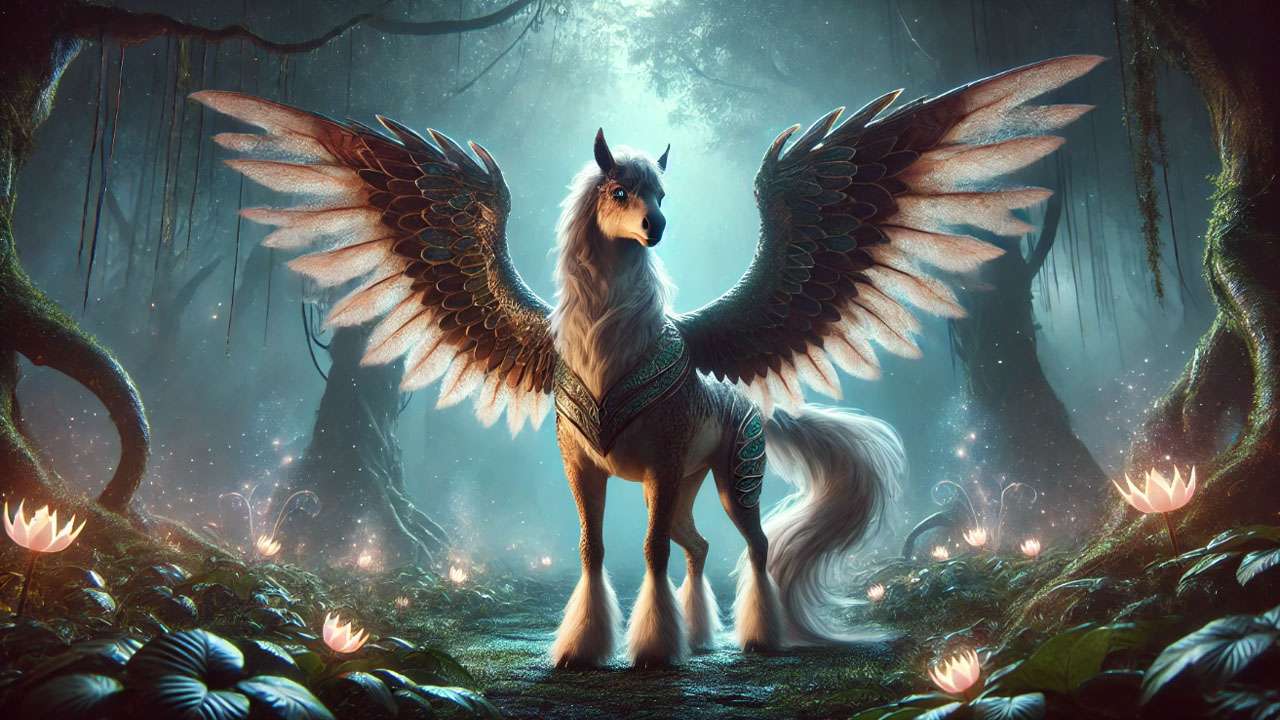
1. Translating Descriptions into Visual Art 🖌️🐍
Rowling’s descriptions of magical creatures are vivid, but it’s the work of illustrators that turns these words into iconic images. Take the Hippogriff, for example. In The Prisoner of Azkaban, Rowling describes the creature as having the body of a horse and the head of an eagle. The artist’s challenge was to balance these two creatures, creating a believable hybrid that still looked majestic and magical.
The team of artists involved in the Harry Potter films also had the responsibility of staying true to the spirit of Rowling’s creatures while adding their own creative touches to ensure they felt both real and magical on screen. For example, Thestrals, with their skeletal, ghostly appearance, needed to evoke both the eeriness of death and the beauty of the mystical world. The final design perfectly captures this balance, making Thestrals both unsettling and fascinating. 💀🦇
2. The Impact of CGI and Practical Effects 🎬💻
For the films, the role of CGI (computer-generated imagery) and practical effects was key in bringing magical creatures to life. While some creatures, like the Buckbeak in The Prisoner of Azkaban, were brought to life through animatronics and puppetry, others, like the Hungarian Horntail, were digitally created to give them a fluid, life-like movement.
The integration of CGI allowed these creatures to interact with the actors and the environment in a way that felt authentic to the magical world. The digital team meticulously crafted creatures like the Basilisk and Fawkes to ensure they didn’t just look realistic, but also conveyed the right emotions and magical aura. The success of these designs comes down to blending digital effects with the performance of the actors, allowing magical creatures to truly feel alive on screen. 🎥🦁
3. The Importance of Creature Designers in Building Immersion 🧙♂️🎨
Creature designers aren’t just responsible for creating creatures—they also help shape the entire atmosphere of the magical world. Artists work closely with directors, set designers, and costume designers to ensure that each creature fits seamlessly into the world around them. For example, the Mandrakes in The Chamber of Secrets were designed to look like plant-like beings, reflecting their role in potion-making and healing magic.
Designing creatures isn’t just about appearance—it’s about how they fit into the magical ecosystem. Artists and illustrators often spend hours researching real animals, plants, and mythological creatures to inform their designs, ensuring they look both magical and believable. This level of attention to detail creates a more immersive experience for the audience, where magical creatures feel like they’ve always existed in the Wizarding World. 🌱🐍
4. Evolution of Creature Design Across the Series 📚🌟
The design of magical creatures evolved across the Harry Potter films as technology and artistic techniques improved. The first films featured simpler, more traditional effects, but by the time we reach the Fantastic Beasts series, the creatures had become even more detailed and expressive. For example, Newt Scamander’s magical beasts, like the Thunderbird and the Bowtruckle, were designed with intricate textures and lifelike movements, showcasing the progression of creature design over time.
The evolution of these designs also reflects the growing complexity of the Wizarding World itself. As the magical universe expanded, so did the creatures within it, becoming more nuanced and integrated into the narrative. This evolution helps keep the magical creatures fresh and exciting for both new and returning audiences. 🔮🦄
5. Collaborating with Fans and Artists 💬🎨
Interestingly, the process of bringing magical creatures to life also involves input from fans and artists outside of the film industry. Fan art, concept sketches, and interpretations of creatures have played a role in shaping public perception and even inspiring official designs. For example, the design of Fawkes the Phoenix was partly inspired by the way fans envisioned a creature that was both majestic and symbolic of renewal.
Fans continue to create their own interpretations of magical creatures, sharing their artwork online and at conventions. This collaborative relationship between artists, filmmakers, and fans ensures that magical creatures remain relevant and continue to evolve even outside of the official Harry Potter franchise. 🖼️✨
VII. Magical Creatures in Popular Culture: Legacy Beyond Harry Potter
The magical creatures in Harry Potter have left a lasting imprint not just within the Wizarding World, but across the entire landscape of popular culture. These creatures, from the majestic Hippogriff to the mysterious Thestral, have inspired countless books, movies, and even fan creations, influencing how magical beings are portrayed in modern fantasy. Let’s explore how these magical creatures have shaped the world beyond Harry Potter and how their legacy continues to grow. 🌍✨
1. Inspiring Other Fantasy Worlds 🌟📚
J.K. Rowling’s magical creatures have become a gold standard for how fantastical beings are designed and integrated into a narrative. Harry Potter revolutionized the way magical creatures are portrayed in modern fantasy, blending mythology with original designs. This influence can be seen in numerous works of fiction that followed.
For example, in Fantastic Beasts (a Harry Potter prequel series), the magical creatures expand on what we saw in the original films, introducing new beasts like the Thunderbird and Bowtruckle. These creatures are extensions of the world Rowling created, showcasing how her approach to magical creatures has shaped not just the Wizarding World but also a new generation of fantasy stories.
Other franchises like Percy Jackson, The Chronicles of Narnia, and The Lord of the Rings also feature magical creatures that owe some of their design and narrative influence to the creatures from Harry Potter. Whether it’s the mischievous nature of a Niffler or the mysterious aura of the Thestral, Rowling’s creatures have redefined how fantastical beings are depicted. 🦄📖
2. The Rise of Magical Creature Lore in Pop Culture 🧙♀️🎥
Magical creatures in Harry Potter are more than just supporting characters—they play essential roles in the narrative and often serve as mirrors for human emotions and experiences. This depth has led to a trend where magical creatures are increasingly seen as symbolic figures in pop culture.
In modern fantasy, creatures often symbolize deeper themes like courage, fear, loyalty, or the unknown. For instance, the Thestral—a creature associated with death and the unseen—has influenced how other stories tackle themes of grief and loss. Similarly, the Phoenix has become a powerful symbol of rebirth and resilience, often appearing in other works of fiction to convey a sense of transformation or renewal.
The symbolic weight of magical creatures has led them to be incorporated in everything from children’s media to more adult-oriented fantasy stories, continuing the legacy of the profound connections between humans and magical beings. 🔮💫
3. Fan Communities and Interpretations 🌐🎨
The Harry Potter franchise has one of the largest and most dedicated fanbases in the world, and magical creatures play a central role in fan culture. Fan art, fan fiction, and cosplay are thriving communities where fans explore and reimagine the magical creatures from the books and films. For instance, countless pieces of fan artwork depict re-imagined versions of familiar creatures like Hagrid’s Buckbeak or the Mandrake, showcasing their personal interpretations and the impact these creatures have had on their imaginations. 🖼️🎭
Fan theories about the origins or symbolic meanings of creatures continue to proliferate, with communities discussing their favorite magical beings and speculating on untold aspects of their lives. The discussion around these creatures has helped keep them alive in popular culture, long after the original stories were told.
4. Magical Creatures in Video Games and Theme Parks 🎮🏰
Magical creatures from Harry Potter have also found their way into interactive experiences like video games and theme parks. Games like Lego Harry Potter and Harry Potter: Wizards Unite allow players to interact with iconic creatures from the series, further cementing their place in modern entertainment.
In addition, the Wizarding World of Harry Potter theme parks at Universal Studios bring these creatures to life in immersive ways. Visitors can encounter Thestrals in the Forbidden Forest, interact with Buckbeak in Hagrid’s Hut, and even face off against Dragons in thrilling rides. These experiences allow fans to connect with the magical creatures in a hands-on way, deepening their emotional connection to the franchise. 🦁🎢
5. Influence on Modern Creature Design 🖥️✨
The Harry Potter creatures have set a new standard for creature design in both literature and film. With their intricate details and vivid personalities, Rowling’s magical beasts have inspired countless creators in the fields of gaming, animation, and special effects. Many modern fantasy series now look to Harry Potter for inspiration when designing creatures that are not only visually striking but also play an integral role in the narrative.
The blend of realism and fantasy in creatures like Fawkes the Phoenix or the Niffler has become a hallmark of contemporary fantasy creature design, influencing how magical beings are conceptualized in everything from animation to graphic novels. 🎮👾
The Enduring Magic of Magical Creatures in Harry Potter
Magical creatures in Harry Potter are far more than just fantastical beings—they are integral to the depth and richness of the Wizarding World. From their origins in mythology and folklore to their carefully crafted designs, these creatures add layers of meaning, emotion, and wonder to the series. Whether they represent deep themes of life, death, and loyalty, or serve as narrative tools to drive the plot forward, they are a reflection of J.K. Rowling’s brilliant world-building and storytelling. 🦄✨
The legacy of these magical creatures extends well beyond the pages of the books and the scenes of the films. They continue to influence modern fantasy, pop culture, and the way we think about magical beings in storytelling. Their symbolism, emotional depth, and unique designs have inspired countless other works of fiction, from Fantastic Beasts to video games, fan art, and theme parks, ensuring that their magic will live on for generations to come. 🌍📚
As we revisit the Wizarding World, we can’t help but marvel at how these creatures continue to shape our understanding of magic and storytelling. Whether you’re learning about the Thestral’s lesson on grief or marveling at the majestic Phoenix, each magical creature invites us into a world where the impossible becomes possible—and reminds us that magic is all around us, waiting to be discovered. ✨
Frequently Asked Questions (FAQs)
1. What inspired J.K. Rowling to create magical creatures in Harry Potter?
J.K. Rowling drew inspiration for many magical creatures from real-world mythology, folklore, and her own imagination. Creatures like the Hippogriff and Basilisk are based on ancient legends, while others, like the Niffler, reflect her unique creative blend of humor and magic.
2. How did J.K. Rowling design magical creatures in the Harry Potter series?
Rowling combined traditional myths with her own fantasy concepts to design creatures with unique traits and abilities. She carefully blended real animal biology with magical traits to create beings that feel both fantastical and grounded in reality.
3. What role do magical creatures play in the Harry Potter stories?
Magical creatures are essential for storytelling in Harry Potter. They often represent key themes like loyalty, death, and courage (e.g., Thestrals symbolizing grief), and they drive the plot forward by challenging characters or aiding them in significant moments.
4. How are magical creatures in Harry Potter connected to mythology?
Many of the creatures in the series, like the Basilisk and Cerberus, are inspired by ancient mythology and folklore from various cultures. Rowling adapted these legendary creatures, giving them new magical qualities that fit within the Wizarding World.
5. What is the significance of creatures like the Thestral and Phoenix?
Creatures like the Thestral symbolize the themes of death, loss, and acceptance. The Phoenix, on the other hand, represents rebirth and renewal, offering hope and resilience, especially in the face of hardship, reflecting key themes in the series.
6. Why do magical creatures in Harry Potter appear so real despite being fictional?
Rowling’s blend of real-world animal biology with magical abilities creates creatures that feel authentic and relatable. For example, Hippogriffs and Dragons are based on real animals but have unique, magical traits that make them feel both fantastical and believable.
7. How did artists and filmmakers bring magical creatures to life in the Harry Potter films?
Artists and filmmakers used a combination of practical effects (like animatronics) and CGI to bring creatures to life on screen. The designs were based on Rowling’s descriptions, with the creative team adding their own visual flair to ensure the creatures felt real while maintaining their magical qualities.
8. What impact have magical creatures from Harry Potter had on other fantasy works?
Magical creatures from Harry Potter have inspired other works of fiction, including books, movies, and video games. Their design and symbolism have influenced how magical beings are portrayed in modern fantasy, from the Phoenix in other stories to the Niffler’s influence on mischievous creatures in contemporary media.
